We advise and can remedy problems caused by
Urinary incontinence
Learn more about urinary incontinence and its treatment
What is urinary incontinence?
Did you know that over 400,000 adults suffer from some form of incontinence, either urinary incontinence or fecal incontinence? In this article, we will delve into urinary incontinence.
Urinary incontinence, often referred to as urine leakage, involves involuntary urination. Unfortunately, the subject is taboo, resulting in many living with untreated incontinence and therefore experiencing a reduced quality of life.
Jump to section [Vis]
Symptoms of urinary incontinence
- You have difficulty emptying your bladder.
- You’re dripping all the time.
- You can’t hold your pee.
- You are up several times each night to pee.
If you have one or more of the above symptoms, you should see your doctor for an evaluation.
What types of urinary incontinence are there?
There are four different types of incontinence. Read more about them below.
Stress incontinence
Stress incontinence, also known as stress incontinence, is the involuntary loss of urine that occurs during physical activity, sneezing, coughing, laughing, etc. This condition is often caused by weakness in the pelvic floor muscles, and can often be improved through pelvic floor training. If you are unsure about what pelvic floor training involves, it is recommended to contact a gynaecological and obstetric physiotherapist or osteopath for guidance.
If training does not work, other treatments may include surgery or hormonal suppositories for the vagina if you are postmenopausal.
Stress incontinence primarily affects women, but men can also get it.
Urgency incontinence
Urge incontinence, also known ‘overactive bladder’, occurs when you often experience an irresistible urge to urinate and do not always make it to the toilet in time. Another symptom may be waking up several times a night to urinate. The leakage is caused by the bladder contracting involuntarily.
Urge incontinence can often be improved with adjustments to drinking habits and pelvic floor training. If you are unsure about what pelvic floor training involves, it is recommended to consult a gynobs physiotherapist or osteopath.
Other treatment methods may include bladder relaxants, hormone suppositories for postmenopausal women, Botox, and sacral neurostimulation.
Both women and men are affected by urgency incontinence.
Overflow incontinence
Overflow incontinence is when the bladder is not completely emptied when urinating. The reason may be that you have ignored your body’s signals to urinate for a long time, thereby developing a large and flaccid bladder. Overflow incontinence often causes urine leakage.
Mixture incontinence
It is possible to have multiple types of incontinence at the same time, so it is important to get diagnosed.
Source: https//www.kontinens.org
Risk factors and causes of urinary incontinence
- Age
- Overweight
- Births (cesarean section and vaginal)
- Relax your pelvic floor muscles.
- Diseases of the central nervous system such as Parkinson’s and sclerosis.
- Blood clot.
- Brain hemorrhage.
- Dementia.
- Prolapsed uterus.
- Bladder spasms.
- lung diseases such as COPD with severe cough
- Incontinence can occur as a side effect of medication.
Sources: http://www.min.medicin.dk, https://www.sundhed.dk and https://www.kontinens.org

Incontinence in men
In men, incontinence is often caused by diseases or conditions in the prostate. The prostate is located around the urethra and just below the bladder. As men age, the prostate can grow and thus put pressure on the urethra. If the prostate is enlarged, it can be difficult to get rid of water properly, and this can result in many small urinations – even involuntary ones.
In men, urgency incontinence is the most common type, followed by mixed incontinence, and only very few men experience stress incontinence.
Source: https://www.min.medicin.dk
Incontinence in older women
In women, incontinence is typically caused by a prolapsed uterus, bladder spasms, or a weak pelvic floor after pregnancy, vaginal birth, or cesarean section.
The condition in women is divided into three categories:
- Light incontinence: Drip leakage 1-2 times a month.
- Moderate incontinence: Daily drip leakage.
- Severe incontinence: Major leaks at least once a week.
Treatment of urinary incontinence
It is recommended to contact your doctor if you have symptoms of urinary incontinence to determine the type of incontinence and thereby determine the best form of treatment.
Pelvic floor training
Specialized physiotherapy may be helpful in strengthening the pelvic floor muscles.
Medicine
There are medications that can relieve the symptoms of incontinence. However, bladder relaxation medications can often cause annoying side effects such as dry mouth and eyes and a tendency to constipation.
Surgical procedures
In some cases, surgery may be a solution, especially for severe incontinence. There are various surgeries available, such as sphincter “filler,” continence balloon, a sling under the urethra, and an artificial sphincter.
Lifestyle changes
Weight loss, changed diet and increased physical activity can have a positive effect.
Bladder training
Bladder training can also help improve control.
Incontinence aids
Aids such as pelvic floor training, diapers and catheters can be of great help. It is also recommended to contact your doctor if you suspect incontinence.
Osteopathy and incontinence
Osteopathy can be a possible treatment for incontinence, especially when the problem is related to the musculoskeletal system. Osteopaths work to improve the body’s function through manual techniques that can help to:
- Strengthening the pelvic floor muscles: Osteopathy can help identify and strengthen the muscles that support the bladder.
- Improve blood circulation: Better circulation can support healing processes and muscle balance.
- Reduce tension: The treatment can relieve tension in areas such as the pelvis and lower back, which can affect bladder function.
- Improve posture: Better posture can have a positive impact on pelvic floor function.
Good advice for incontinence
- Pelvic floor training can help with stress incontinence, gynaecological and obstetric physiotherapists and osteopaths can guide you through rehabilitation. This is especially relevant after pregnancy, childbirth and cesarean section.
- To avoid constipation, it is important to drink enough, but not more than 1.5 liters of fluid per day, which includes coffee, soup, and watery fruits. Too little fluid can irritate the bladder and increase the urge to urinate, as well as the risk of cystitis.
- Strive to empty your bladder regularly (about every 3 hours), avoid being overweight, stop smoking, and remember to go to the bathroom before leaving home.
Sources: https.//www.sundhed.dk and https://min.medicin.dk

Exercises for incontinence
Squat exercises are an effective method for strengthening the pelvic floor muscles.
Here is a step-by-step guide on how to perform them:
- Find the right muscles: Identify the pelvic floor muscles by stopping urine during urination (do it rarely so as not to affect bladder function).
- Find a comfortable position: Lie on your back, sit or kneel.
- Tighten your muscles: Contract your pelvic floor muscles and hold the tension for 3-5 seconds.
- Relax: Release tension.
- Repeat: Perform about 10 repetitions per set, with 3 sets per day.
Be patient as results may take time to appear.

Often related pain
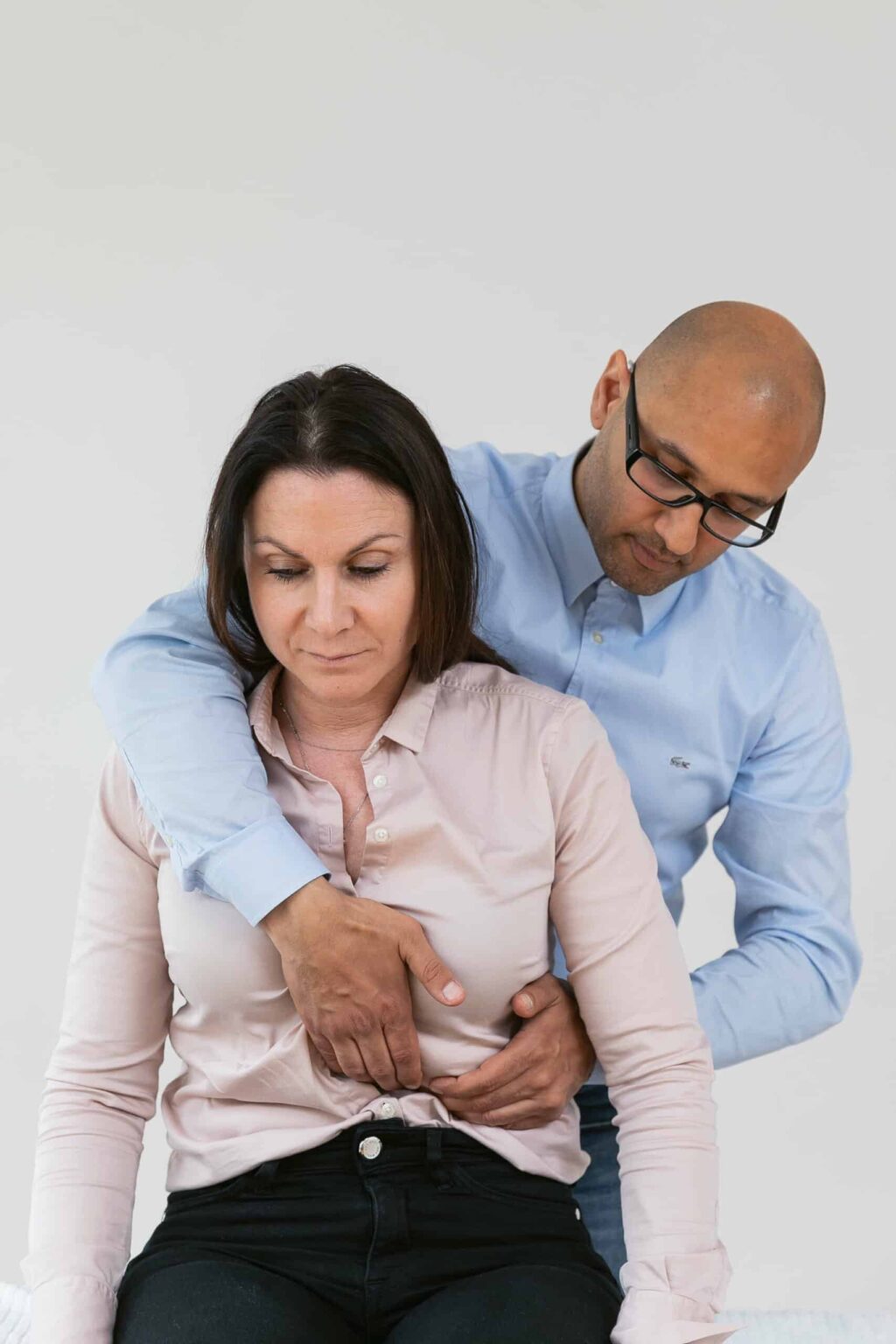
Side stitch
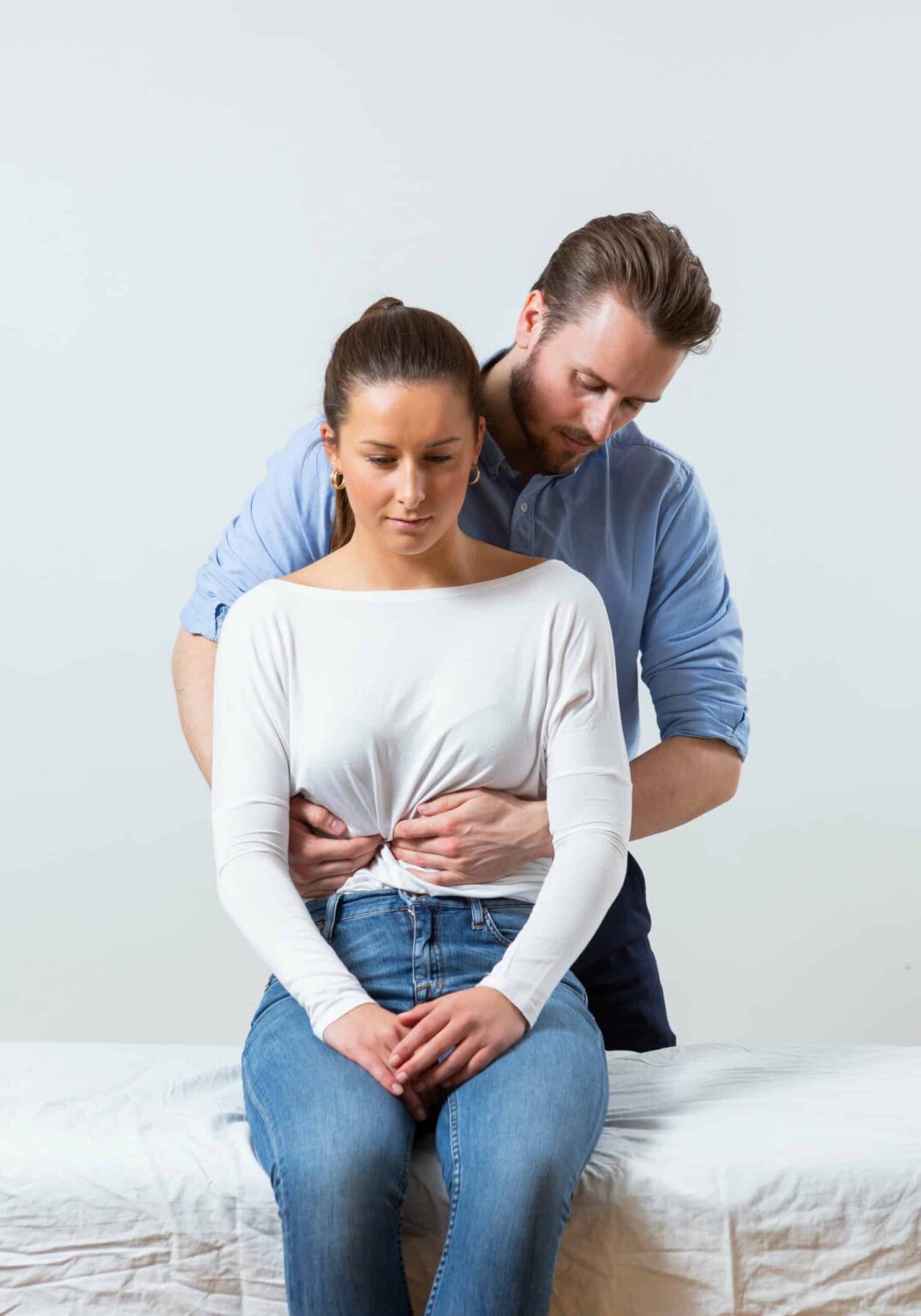
Hidden constipation
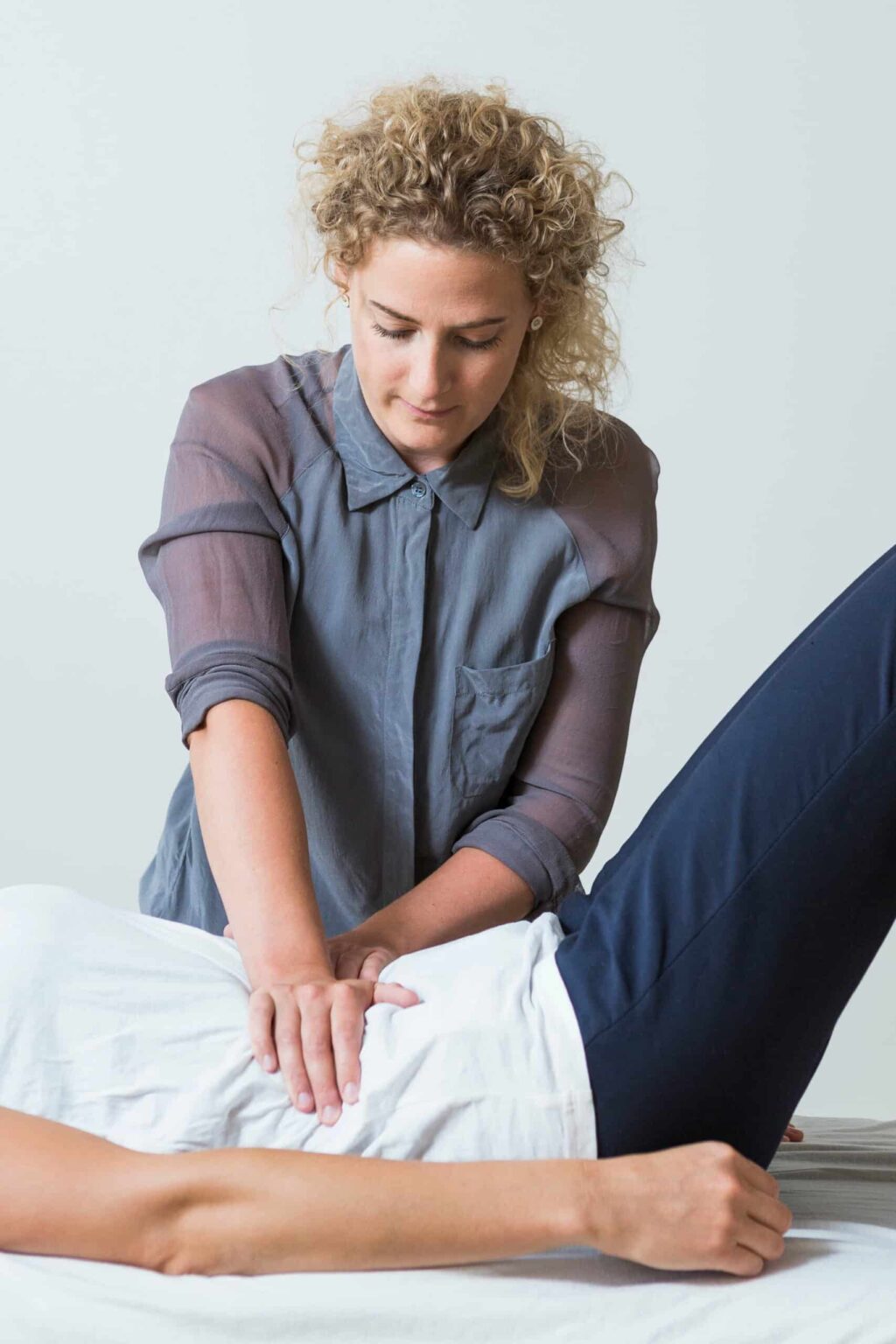
Urinary incontinence
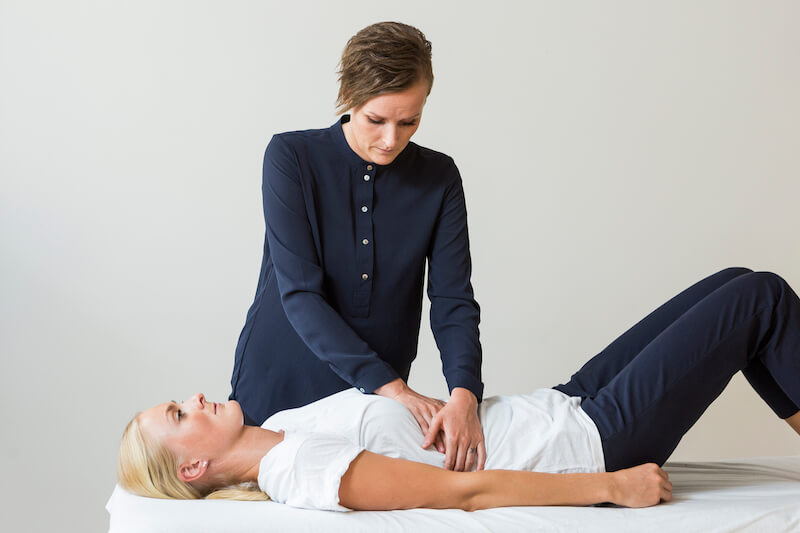
Celiac disease
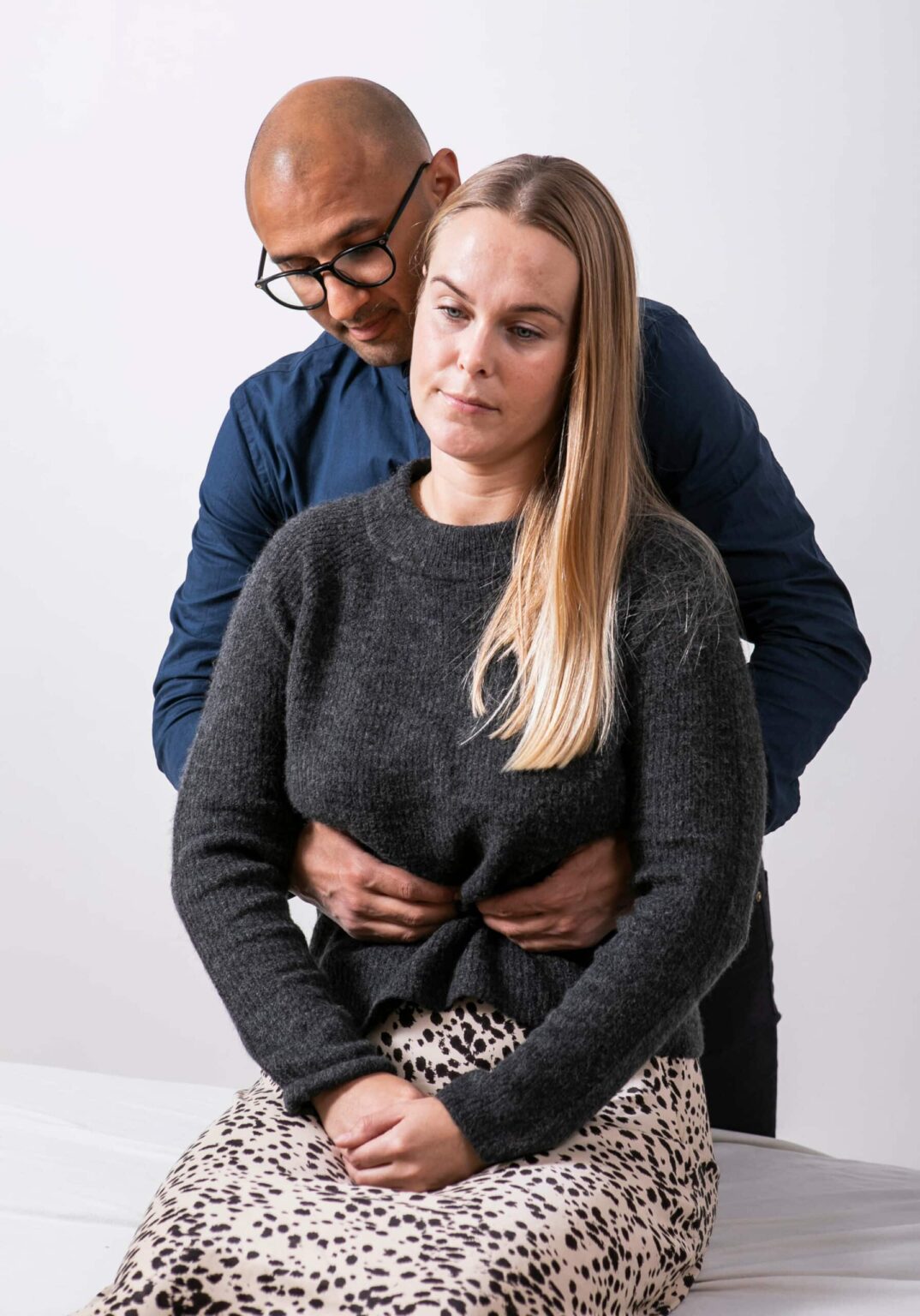
Ulcer
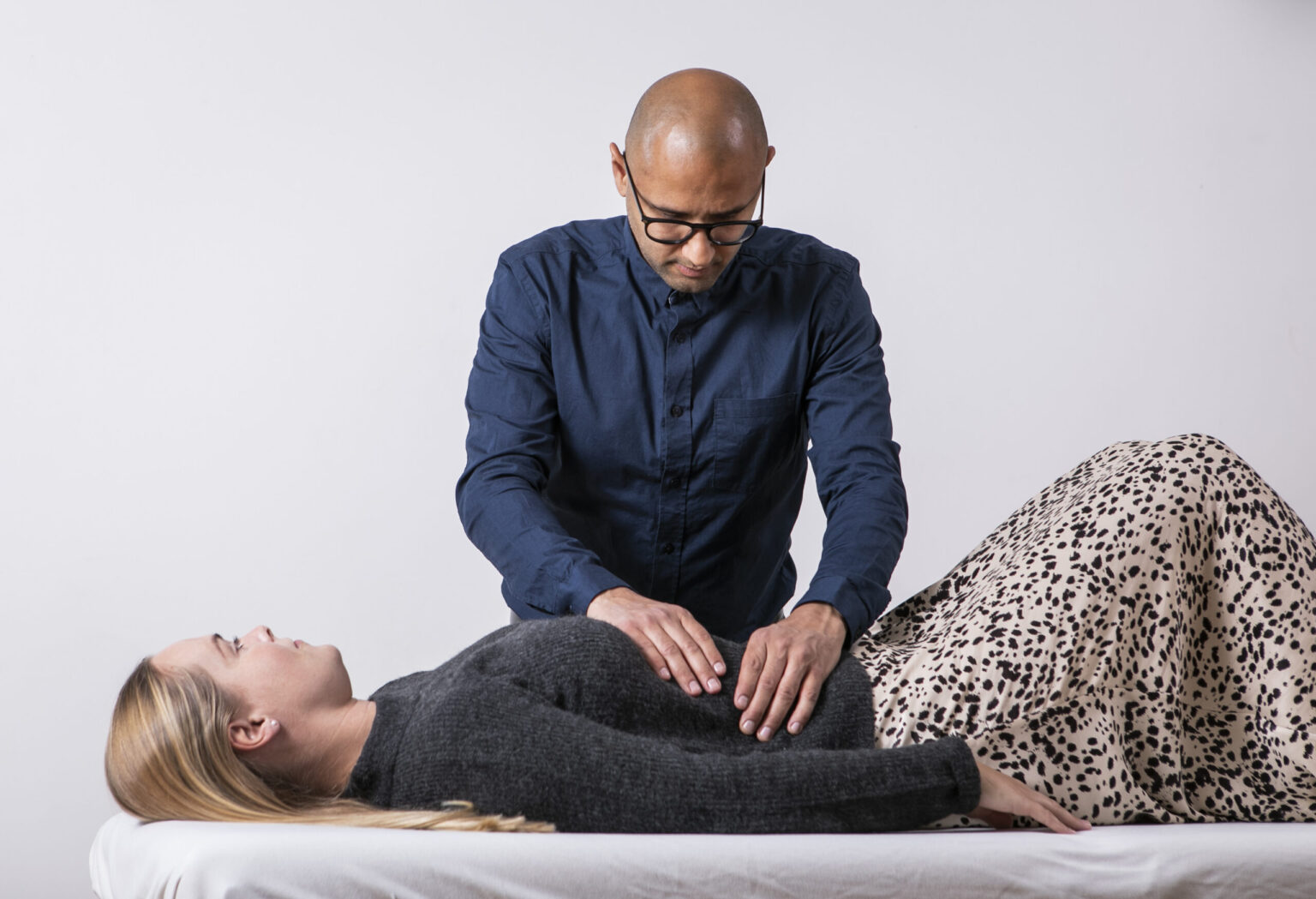
Hernia
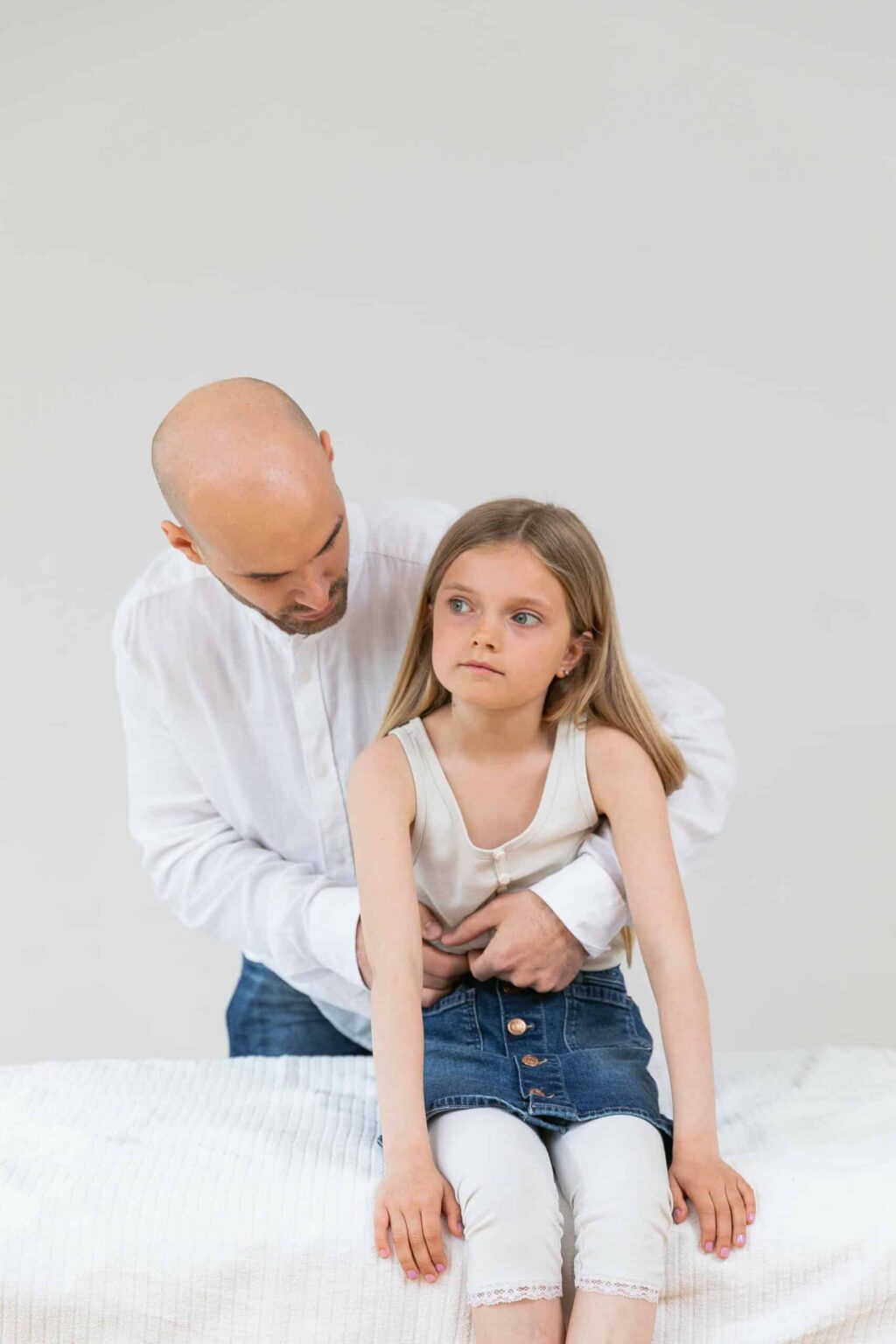
Lactose intolerance

